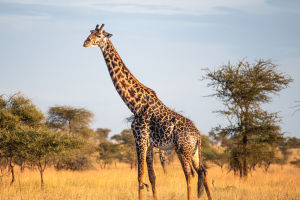Owls, as representatives of nocturnal creatures, are often imbued with symbols of mystery and wisdom. Their unique morphology, behavioral characteristics, and ecological roles make them highly intriguing creatures in the natural world.
This article provides a comprehensive scientific introduction to owls, covering their basic features, habitats, hunting methods, breeding habits, and conservation status.
1. Basic Characteristics
Owls are a group of raptors specially adapted to nocturnal life. Their size ranges from small species like the Eurasian Scops Owl to large species such as the Snowy Owl, with body lengths typically ranging from 15 to 70 centimeters.
A key feature of owls is their large, round heads and facial feathers that form a circular disc, giving them a distinctive mask-like appearance. Their eyes are notably large and forward-facing, providing excellent depth perception, which is crucial for hunting in the dark.
Owls' feathers have a special structure, particularly noticeable in the serrated edges of their wings. This design reduces noise during flight, making owls nearly silent and less detectable by prey. This "silent flight" trait is essential for their hunting success.
2. Habitat
Owls are found in a wide range of habitats. They can live in almost any environment, from tropical rainforests to icy polar regions, from arid deserts to humid wetlands. Their adaptability allows them to thrive in various ecosystems.
3. Hunting Methods
Owls are quintessential carnivores, preying on small mammals, birds, insects, and other creatures. Their hunting methods are unique, relying heavily on their highly developed hearing and vision to locate prey.
Owls have asymmetrical ear placement, which helps them pinpoint the exact location of sounds. Their vision is exceptionally acute, allowing them to see clearly in the dark. They are primarily nocturnal, using their silent flight advantage to approach prey stealthily.
Owls may hunt by soaring silently or by waiting in a perched position. Once the prey enters their hunting range, owls swiftly spread their wings and use their powerful talons to capture it. Their talons are sharp and effective at immobilizing prey. After capturing their prey, owls use their hooked beaks to tear it apart and swallow it whole.
4. Breeding Habits
Owls' breeding habits are also distinctive. They generally begin their breeding activities in the spring, although the timing can vary depending on the species and habitat. Owls usually choose tree cavities, rock crevices, or man-made structures as nesting sites. Some species even use abandoned nests of other birds.
The female owl typically lays 2 to 6 eggs in the nest, with an incubation period ranging from 28 to 35 days. The male and female owls take turns incubating the eggs and providing food for the hatchlings. Newly hatched owlets are covered in down feathers and, after a few weeks of feeding and growth, gradually develop feathers and become independent.
5. Conservation Status
Despite their strong adaptability in the wild, owls face several threats.
Habitat loss is one of the most significant threats, with deforestation, urban expansion, and other human activities reducing their living spaces. Additionally, pesticides and pollution negatively impact owls by decreasing prey populations or directly affecting their health.
To protect owls, many regions have implemented conservation measures, such as establishing protected areas, regulating hunting, and raising public awareness. Scientists are also researching to better understand owl biology and ecological needs, leading to more effective conservation strategies.
Conclusion
Owls, with their unique biological characteristics and mysterious nocturnal lifestyles, captivate the interest of naturalists and scientists alike. They play a crucial role in maintaining ecological balance and hold a special place in human culture.
Understanding and protecting owls not only helps preserve ecological balance but also allows us to better appreciate and respect these fascinating night hunters.


